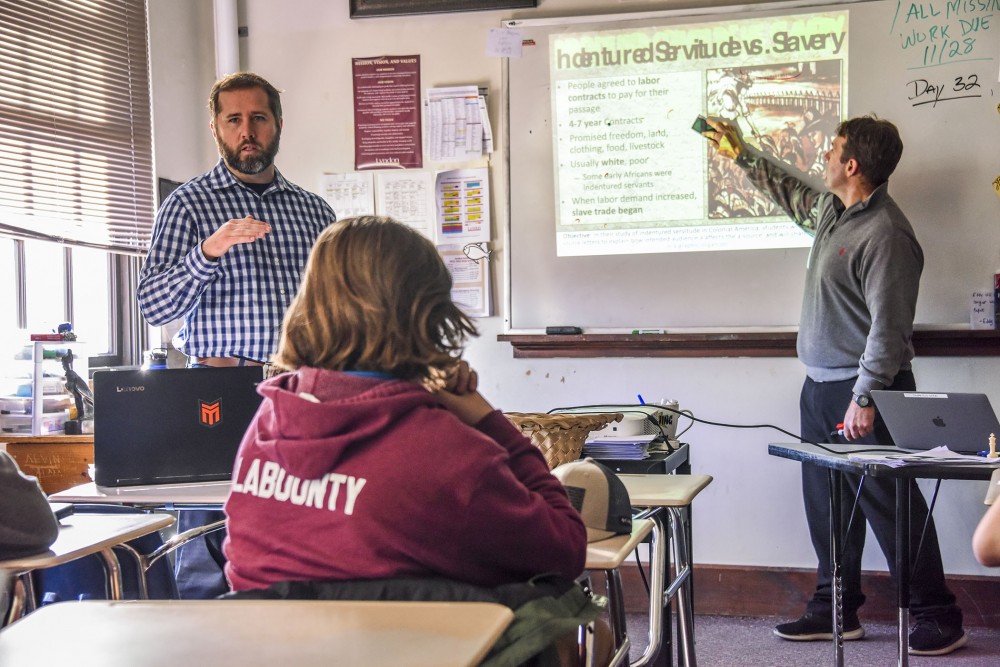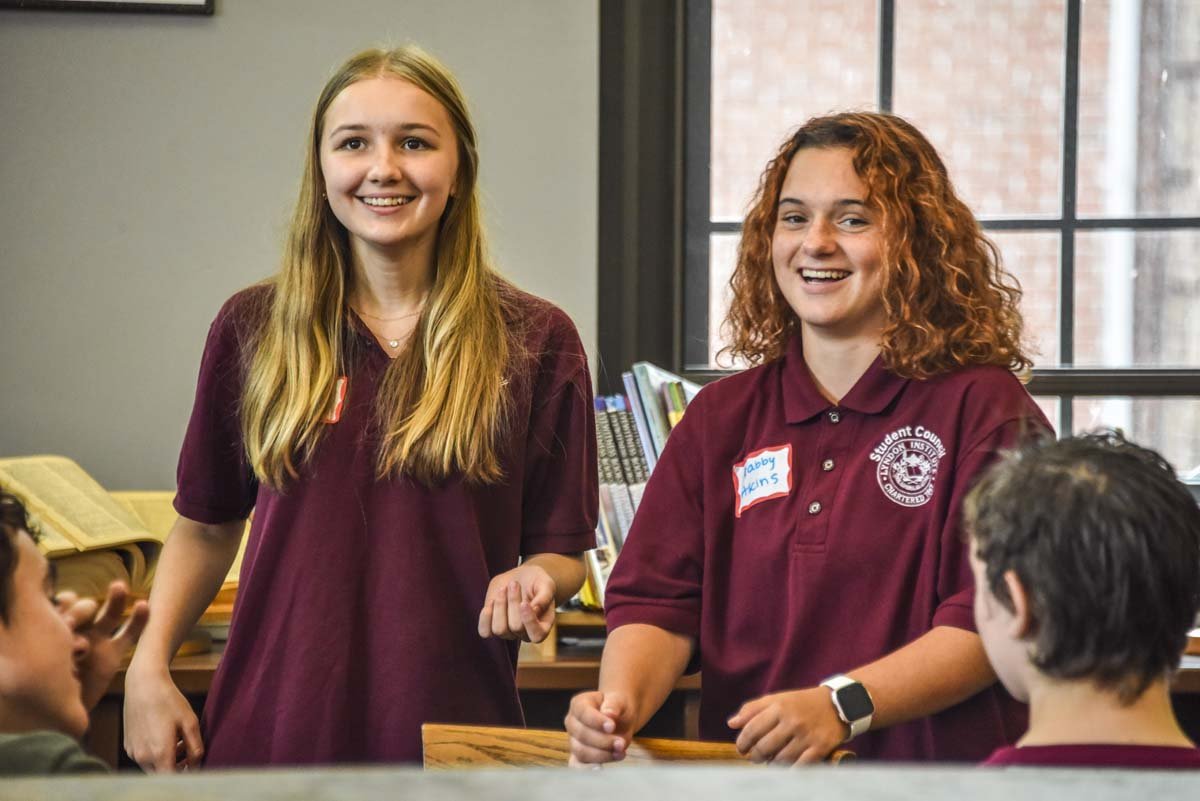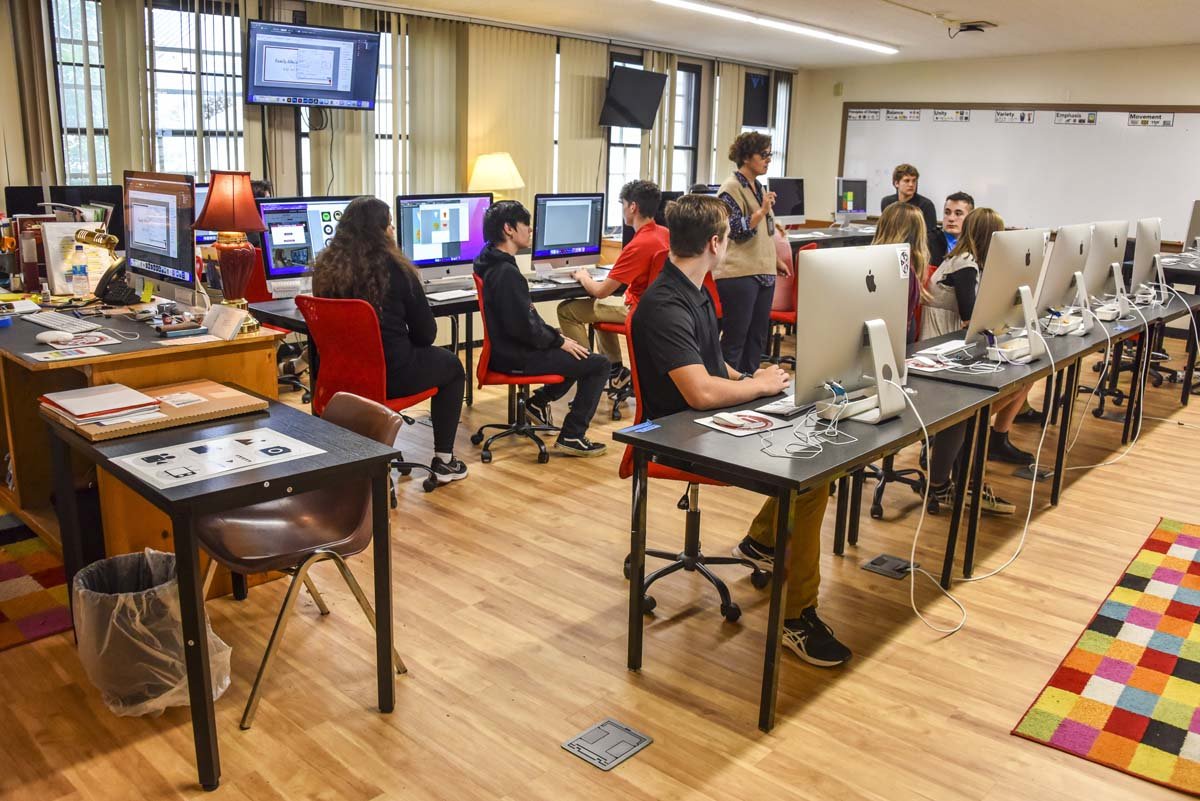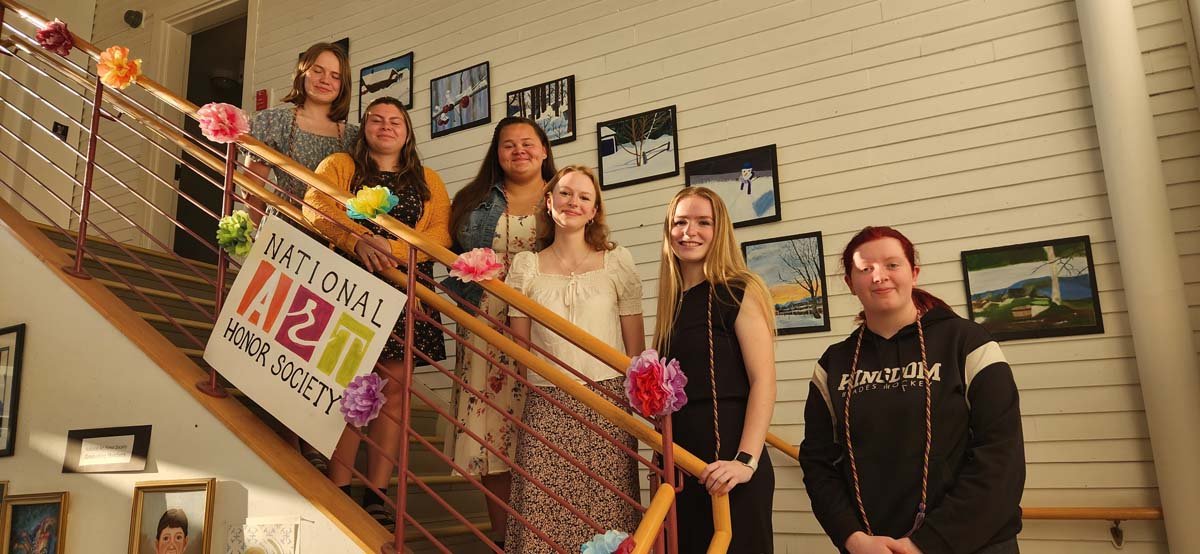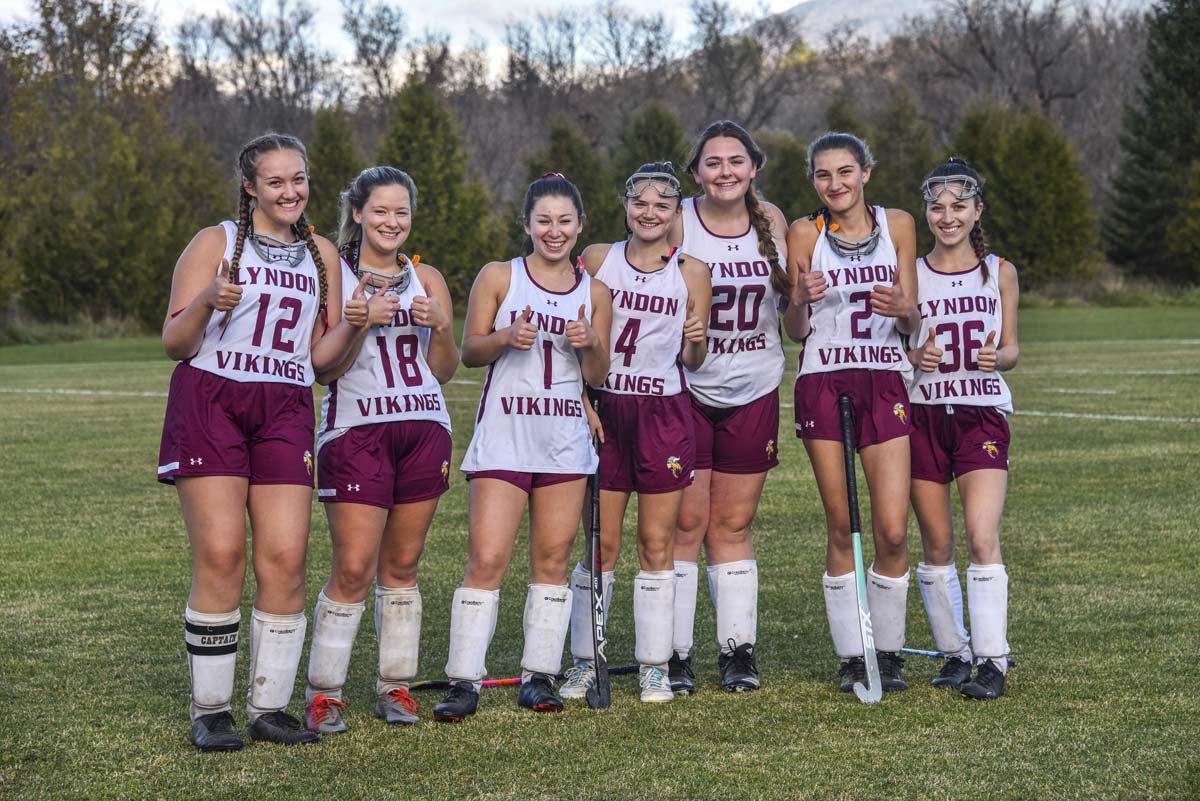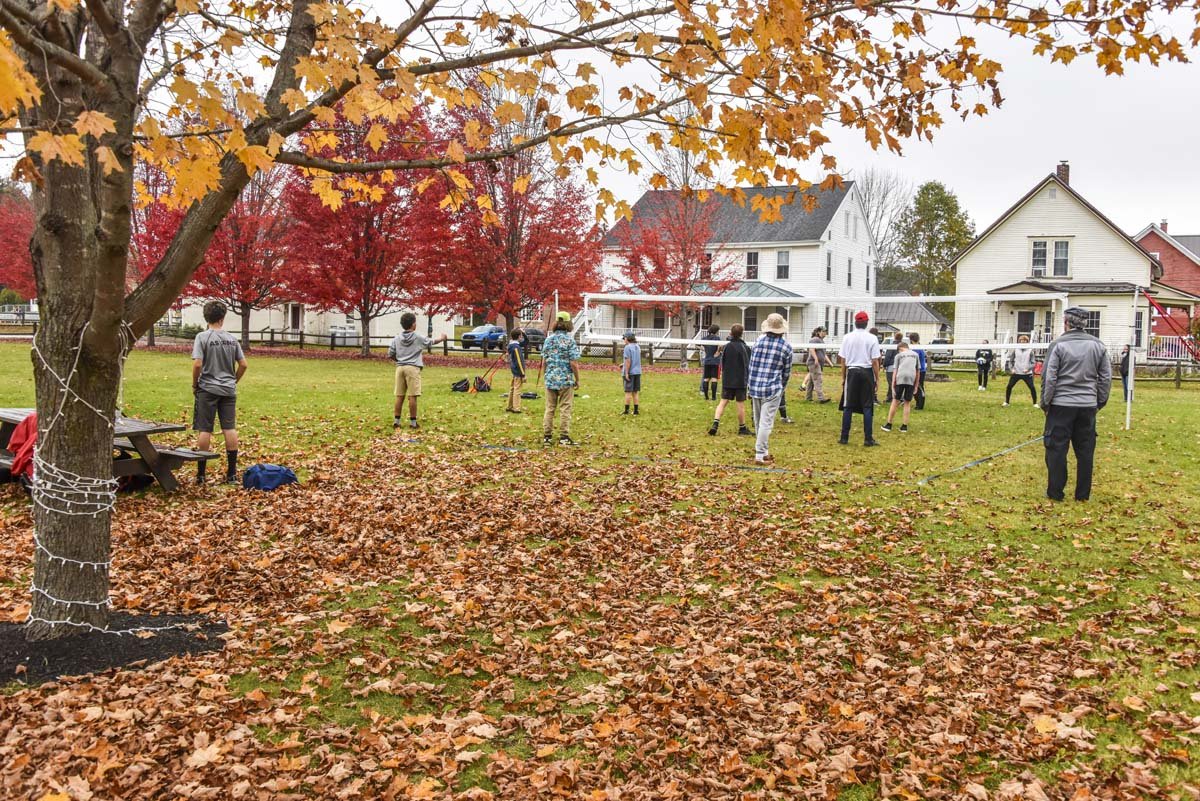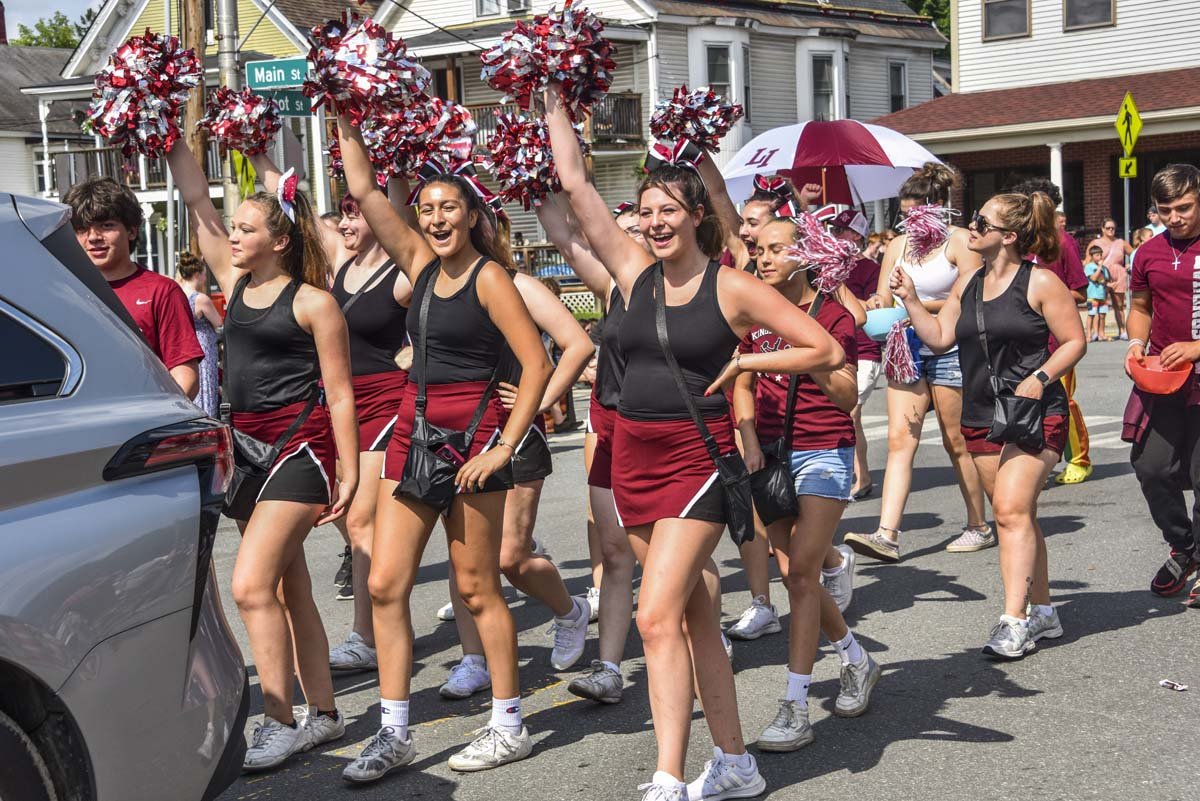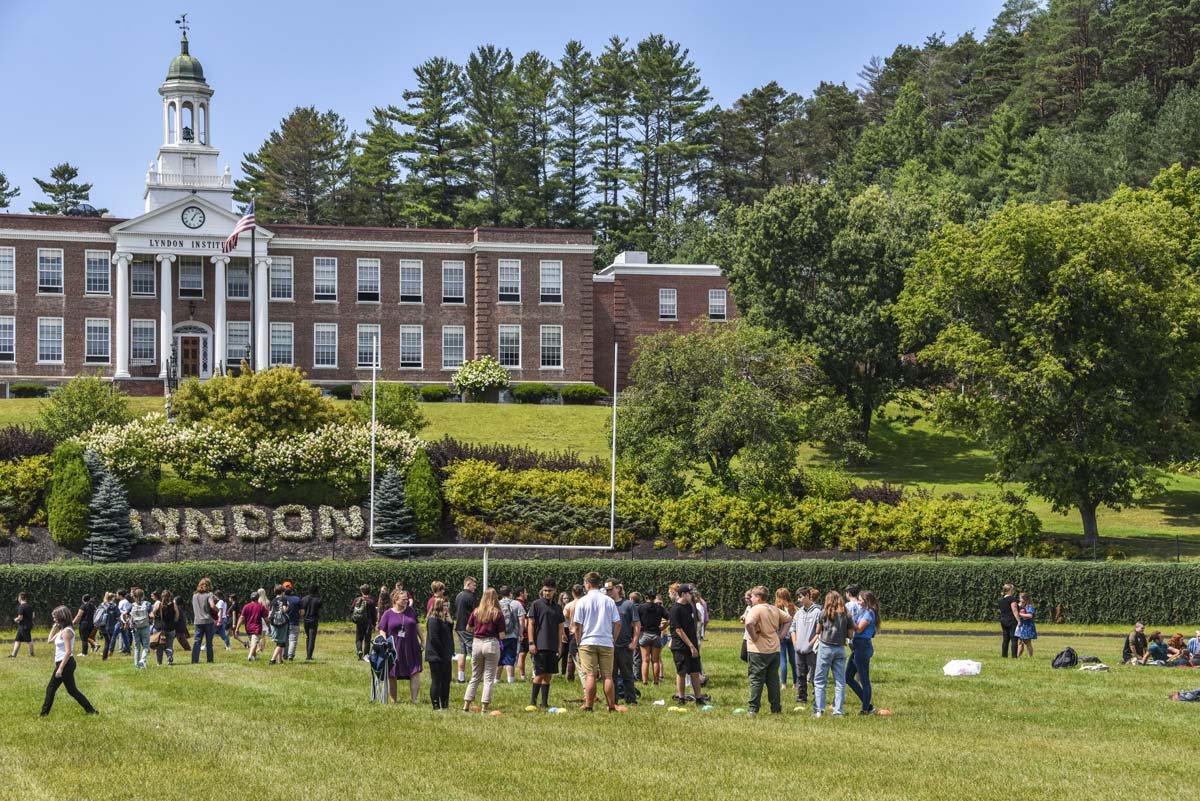- Our School
- Admissions
-
Academics
- Divisions and Faculty
- Commencement 2024
- January Term
- International Program (ESOL)
- College and Career Counseling
- Upward Bound
- Library/Monahan Academic Commons
- Career/Technical Education
- Lyndon Learning Collaborative
- Flexible Lyndon Institute Pathways (FLIP)
- Specialized Instruction
- Adult Continuing Education
- Lyndon Institute Course Catalog
- Student Services
- Arts
- Athletics
- Campus Life
- Support LI
- Alumni
« Back
Co-teaching: A New Model for Success at Lyndon Institute
November 10th, 2022
By David Stahler Jr.
Five years ago, Lyndon Institute embarked on an experiment, a pilot program in co-teaching, led in large part by LI’s Dean of Specialized Instruction, Judd Levine.
“While co-teaching is relatively new to LI, it’s been around for a while,” Levine said. “There’s an overwhelming amount of research that shows its effectiveness, so we wanted to try it here.”
Co-teaching involves pairing a classroom teacher with a special educator, essentially linking a content specialist with a learning specialist, with the two working together directly in the classroom every day.
“The goal is to offer multi-tier systems of support (MTSS),” Levine explained. “Tier 1 students tend to be independent ‘content kids’ who can work well on their own, while Tier 3 students—representing a relatively small percentage of our population, about five percent typically—have major deficits and need close supervision and support in a small setting. Co-teaching, however, is largely targeted toward our Tier 2 students, that middle cohort who may or may not qualify for services but who often have skill-based areas of need.”
Previously, the Special Education Department relied more on instructional assistants (IAs)—paraeducators who are paired one-on-one throughout the day with students on Individualized Educational Plans (IEPs). “Co-teaching has allowed us to now implement fully licensed special educators directly into targeted classrooms where they can help a larger number of students who may be on plans, while also helping those who might not technically be eligible but still benefit from the same services. At the end of the day, the goal is to prevent as many kids as possible from slipping through the cracks, while also meeting our Vermont Act 173 requirements.”
This has been especially true as Lyndon Institute, like many schools, returns to normal operations after more than two years of COVID interruptions, a period in which many students’ educations—particularly those now in 9th and 10th grade—were disrupted, creating in some cases significant learning and behavioral gaps.
The program originally started small—just one or two social studies classes—and its development was somewhat slowed by COVID. However, with the help of some increased funding targeting schools in the wake of the pandemic, LI felt that the time was ripe this year to make the program more formalized. Co-teaching now takes place in general-level classes in both 9th and 10th grades and covers all the disciplines, from the humanities to science and math. “Every educator in the Special Education Department now co-teaches at least one class,” said Levine.
I asked Levine if having special educators spend a large portion of their day in classrooms detracted from their traditional duties. “Actually, it’s the opposite. Now we can deliver services directly to multiple students on our caseloads on a more frequent basis while they’re in class, usually all at the same time, and often without them even knowing it.”
Special Educator Doug D'Olimpio, who has been involved with co-teaching from the beginning, echoed Levine’s point. “One of the goals of Special Education is to have students learn in the least restrictive environment possible. Co-teaching is one of the best methods I’ve seen of making that happen.”
The benefits have helped not only students on IEPs but all the students in LI’s general-level classes.
D’Olimpio’s co-teaching partner, social studies teacher Martin Etter, enumerated the positive impacts.
“What I love about the model is its flexibility. As the traditional classroom teacher, I often take the lead in delivering content, but Doug [D’Olimpio] will sometimes step in, especially if it’s an area of interest for him,” Etter said. “And we can experiment with different groupings. He can take a particular cohort of students to a different space for a mini-lesson, sometimes to review a concept in a way that might be especially useful to those kids while I use another approach with a different group.”
“Co-teaching also allows us to model for the students,” he continued. “We’ll sometimes go back and forth with each other in class, engaging in a dialogue on a topic we’re both excited about. The joy of discussing your subject is infectious, and we’re essentially modeling a level of academic discourse our students might not normally see.”
He added the program also yields benefits in terms of classroom management. “I noticed a big improvement in discipline after switching to co-teaching. Having two adults in the room helps tremendously, particularly when we break into groups. The extra set of eyes means I spend much less time dealing with behavior issues and can focus more on teaching.”
Both Etter and fellow social studies teacher Paul Scavitto agreed that the biggest benefit, however, with having a special educator in the room has been the way it’s changed how they deliver instruction.
“It’s been tremendously helpful having Doug [D’Olimpio] there to serve as an observer and, in a way, an interpreter,” Etter explained, “seeing things through the eyes of the students in a way that I didn’t always see.” As learning specialists, special educators’ training can help them pinpoint areas that classroom teachers sometimes miss, whether it’s the framing of an assignment or how the teacher presents a set of instructions or even the use of certain vocabulary.
“Doug will sometimes raise his hand in class to ask a clarifying question. These prompts are tremendously helpful in making me realize I just used a term students might not be familiar with or that I need to break a set of directions down into smaller chunks.”
Scavitto, who co-teaches U.S. History with Levine, highlighted the same benefit. “Judd [Levine] often acts as a check on how I’m coming across to the students. Basically, he’s a voice for the students, in some cases because they may be shy or hesitant to ask a question or might not even realize it needs to be asked. Overall, he’s helped me identify points where I need to slow down, to break down information in more concrete ways.”
This aspect applies not only to real-time instruction but to the lesson planning phase, as well. “Doug has helped me realize the value in my general-level classes of a predictable routine,” Etter said, “and of breaking the period down into smaller blocks and more structured activities, such as our daily guided notes exercise as we work through primary sources. I think we’ve all come to see the value of the ‘backwards design’ or ‘understanding by design’ method of planning.”
It’s not just the students or the regular classroom teachers who benefit from co-teaching, however. “Working with content specialists deepens our own understanding of the subject matter, as well,” Levine noted, “which in turn helps us be more effective when it’s time to help our students.”
Special educators becoming more involved in all aspects of the daily work of a classroom teacher has additional benefits. D’Olimpio explained, “In planning with Marty [Etter], I can identify potential problems students on my caseload might have with certain assignments and restructure them ahead of time to avoid future difficulties. And now that I’m helping with a lot of the assessment work, spending time grading their assignments, I’m getting a much deeper understanding of where they are at with their writing skills and other areas of learning in a way I wasn’t before.”
“Working not only with the students on my caseload but with all the students in the class is a constant reminder of the range of cognitive skill differences and levels of brain development our students have and how important it is to take those differences into account in the classroom.”
Scavitto added another benefit to co-teaching: “Where it shines particularly bright is in meetings with parents. Having both of us on hand allows us to see the whole student and helps parents see the most complete picture of their child.”
Richard McCarthy, LI’s Dean of Faculty, has been helping guide the elevation of this year’s program and is pleased with what he’s seeing. “We want our teachers to teach great lessons, offer engaging activities, and stay on top of their grading. Asking them to also double as special educators in certain classrooms is a big ask, so this program fills a huge need.”
The result is a synergistic effect that benefits everyone. But it doesn’t come easily or without an investment of time and resources.
“It doesn’t happen overnight,” Levine agreed. “In fact, so far we’ve found it takes about three years of working together with a lot of trial and error for a pair of instructors to reach their full working potential. And it's generally a practice that requires seasoned teachers, ones who have already developed a core level of competency in their respective craft and achieved a level of professional maturity. It also has to be the right pairing. Some teachers just aren’t a good fit with each other for any number of reasons.”
Scavitto agreed. “It took Judd [Levine] and I a few years to not only get our process down but to settle into a relationship where we had developed the necessary level of confidence in each other to truly make it work. You have to be open and be able to give each other honest feedback about what is or isn’t working, sometimes on a real-time, immediate basis. It takes time to build that kind of trust.”
“Co-teaching often forces you to be uncomfortable,” Levine added. “But that only makes you grow as a teacher.”
One other resource is important: “Having common prep time is vital,” Scavitto said, “sacred, in fact. Without having time each day outside of class to prepare, none of it works.”
But with dedicated planning time, a good partner, and time to grow together, the results are undisputed.
“I was a little reluctant when we first started five years ago,” Scavitto said. “But now I can’t imagine not doing it, particularly in certain classes. Our student failure rate has dropped and our classes function much more smoothly.”
Of course, additional training helps; on December 1st, Lyndon co-teachers will attend a seminar led by award-winning teacher, presenter, and author Toby Karten to deepen their understanding of the craft and explore new co-teaching strategies for the classroom.
LI’s new Head of School, Dr. Brian Bloomfield, is excited by the school’s commitment to expanding its co-teaching program. “By its very nature teaching can be an isolating profession,” he commented. “Co-teaching is the best model I’ve ever seen to fight against that dynamic, bringing forward open collaboration between a subject-matter expert and a skills-based instructor. The result is better teaching for each teacher and better learning for each and every student in the classroom. No one can be great at everything; co-teaching is a model for the future of education.”
With the program now expanded to multiple grades and subjects, Lyndon Institute hopes this kind of success will help reverse some of the deficit its more recent students experienced in middle school at the hands of the pandemic and help everyone—students and teachers alike—grow as learners in the classroom and beyond.
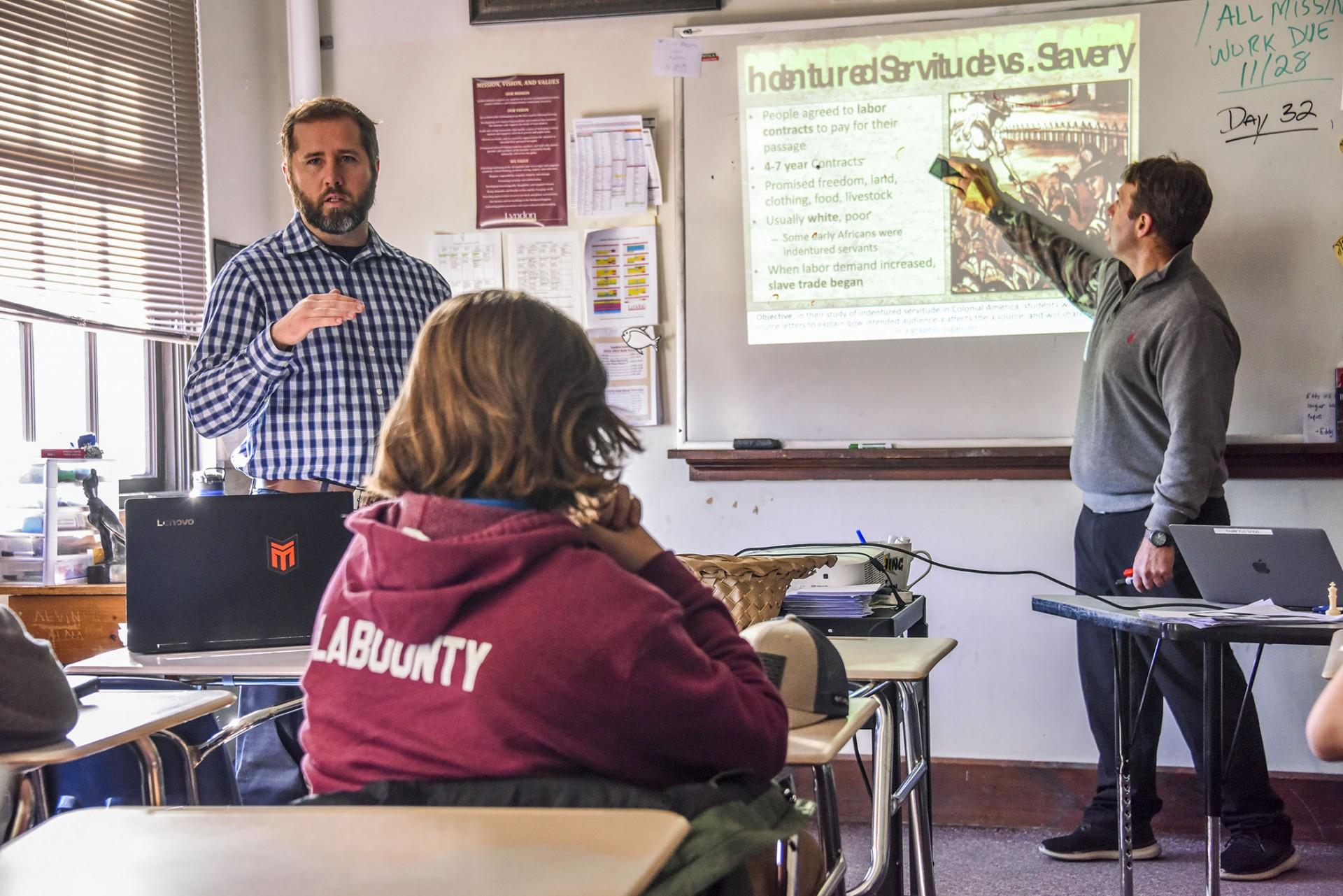
Caption: Lyndon Institute teachers Martin Etter (left) and Doug D’Olimpio (right) speak highly of co-teaching and the benefits that it provides. Photo by Javin Leonard - Lyndon Institute.
Posted in the category Front Page.

